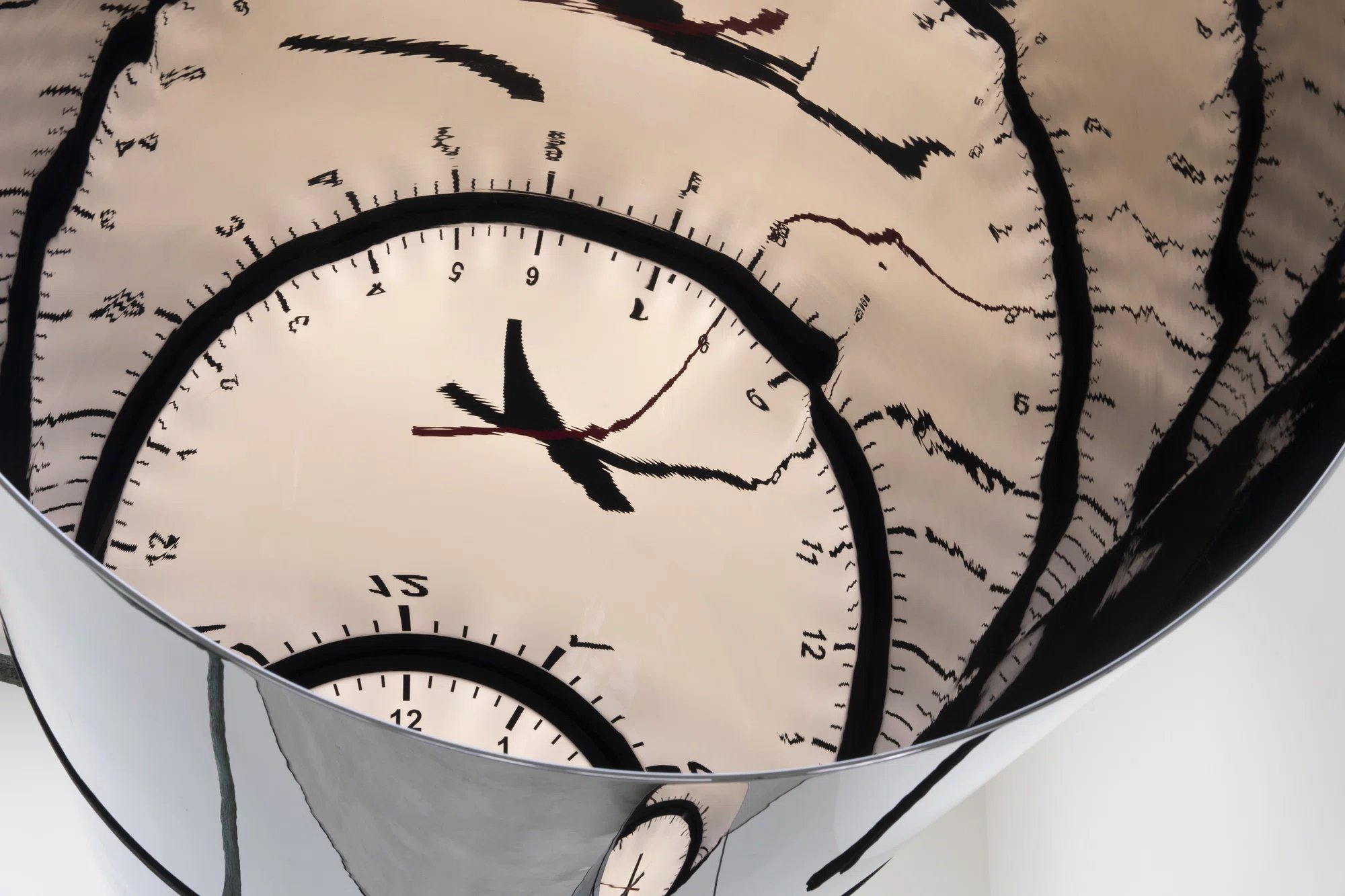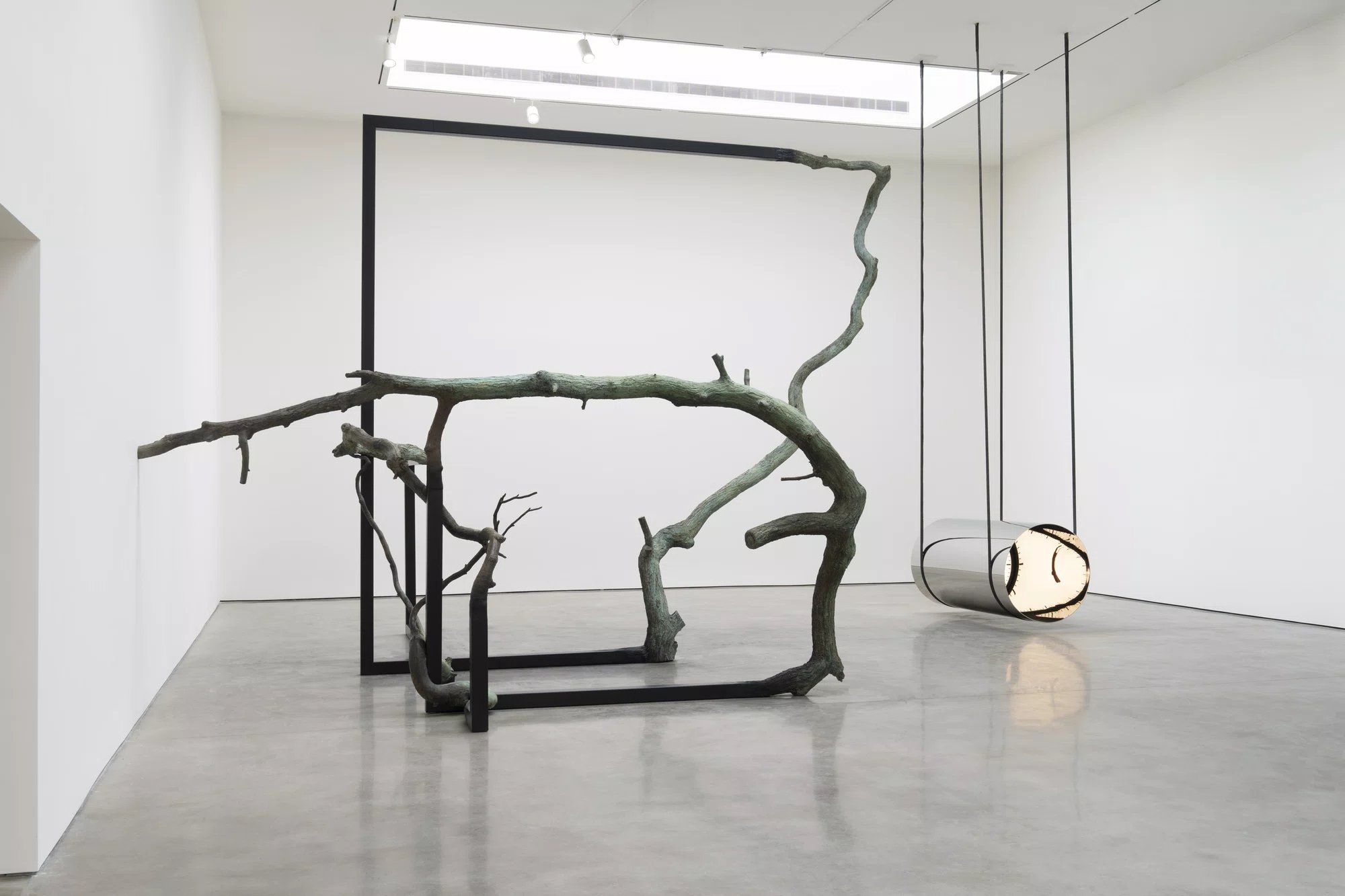Seeing Time: Alicja Kwade’s Clockwork
The analog clock: a once ubiquitous tool that evinces the potential to measure and manage time as a universal phenomenon. With its familiar, even banal face, the clock recalls late-nineteenth-century efforts to standardize time, as the instrument established the regulatory pulse of industrial labor and the streamlined timetable of train travel. Today, in a world increasingly governed by digital timestamps, the analog clock maintains a residue of modernist certainty while evoking the constructed nature of time.
For Alicja Kwade, time is not external to human experience, but rather perceived and produced through quotidian objects, systems, and interactions. In Telos Tales at Pace New York, the Polish-German artist aims not to define the essence of time, but rather to explore how humans reckon with such an elusive phenomenon through mundane props—in this case, the analog clock. Time is not merely a theme or subject matter but rather the epistemological basis of this exhibition, which amounts to a philosophical inquiry.
In the main space, PhaseChase (2025) consists of three reflective steel tubes, each encasing a double-sided clock. The mirrored cylinders suspended from the ceiling function as kaleidoscopes that multiply and magnify the clock faces. The warped reflections shift with each step, as the layered ticking sounds from the three tubes reverberate with the existential weight of passing time. Through optical distortion, Kwade calls into question the authority of the supposedly empirical instrument, in turn suggesting that time—like vision—is contingent, perspectival, and inherently unstable.
The tubes are positioned amongst a trio of large-scale sculptures titled after Aristotle’s classical causes: Causa Materialis, Causa Efficiens, and Causa Formalis (2025). Within each self-contained structure, a rigid geometric scaffolding metamorphoses into tree branches modeled in bronze. The wending tree limbs first appear organic, but up close, the green tinge of the bark lends an uncanny sci-fi aesthetic. The contrast between the twisting branches and the rigid scaffolding evokes efforts to control the untamable, recalling human attempts to impose order on the unwieldy concept of time. As with the endlessly reflected clock faces in PhaseChase, the deceptively naturalistic metal tree limbs trouble distinctions between the real and the illusory. And yet, Kwade is not merely interested in visual trickery. By playing with the parameters of perception, her work probes the very systems—scientific, philosophical, and social—that shape our understanding of time and space as interconnected, even inseparable phenomena.
One tree branch seemingly juts through the gallery wall, connecting the main space to an adjacent room, where Kwade’s SunderState series (2025) complicates the legibility of time. Clear glass cylinders of varied heights are spaced throughout the room. An analog clock is situated in the base of each, yet the face can be glimpsed only from directly above, and even then, it’s impossible to discern the time beneath the rippled topography of the glass surface. The hands, numbers, and notches are refracted as a pattern, the familiar elements of the clock face further abstracted from the abstraction that is the design of the clock. If the mirrored clocks in the main space evoke the multiplicity of time, SunderState suggests the elusivity of time as something visible only incompletely, only from the right angle. The reflective surfaces of both the polished steel and the glass are conducive to contemplative, insistently embodied encounters, underscoring the perception of time as—literally, here—dependent on perspective. These installations are both metaphysical and yet deeply physical, rooted in the contingent experience of seeing while moving through space.
Kwade does not outright critique the systems we use to track time. Instead, she invites us to consider the clock as a psychologically charged object that encapsulates desires to quantify the unquantifiable. Both installations recall the empirical aspirations of the clock, yet the distorted optics complicate fantasies of time as objective. As such, Telos Tales resists any single model of temporality. Linear time, for example, is evoked by the numerous clocks, yet simultaneously undercut by the fluid spatial logic of the exhibition itself. The trees, meanwhile, prompt thinking on an expanded temporal scale, as an arboreal lifespan renders inconsequential the ticking of seconds.
As in much of Kwade’s work, the philosophical rigor of Telos Tales is rooted not in didacticism but in the sensorial rhythm shaped by the installations, with the clocks as metronomes conducive to contemplation. In turn, this spatial choreography invites viewers to think of time not just as something measured but something inhabited, a lived dimension that exceeds strict quantification.
Alicja Kwade: Telos Tales is on view at Pace from May 7 through August 15, 2025.
Edited by Jubilee Park




